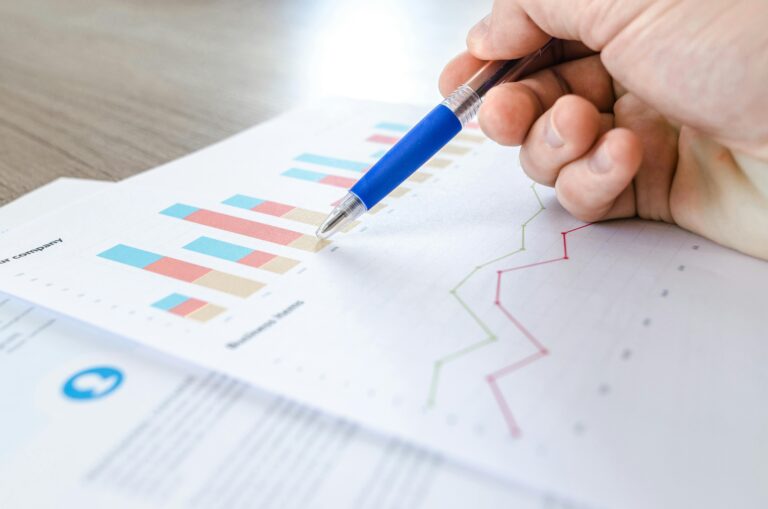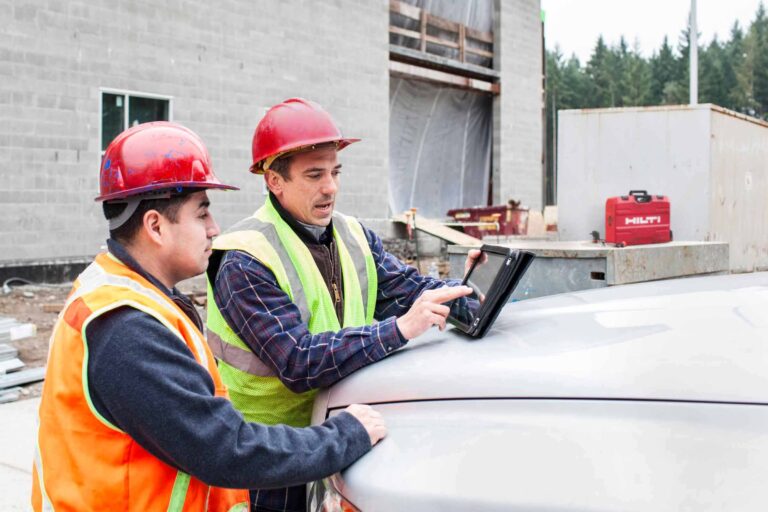
As the global climate crisis intensifies, the construction industry finds itself at a pivotal crossroads. Buildings are responsible for nearly 40% of global carbon emissions, making the sector a significant contributor to environmental degradation—but also a key area for impactful change. Sustainable construction and green building practices are no longer reserved for the environmentally conscious elite. They are quickly becoming standard expectations, driven by stricter regulations, client demands, and long-term financial benefits.
But sustainability in construction is more than just using recycled materials or installing solar panels. It requires a cohesive, strategic approach that starts in the planning phase and continues through to operation and maintenance. That’s where digital tools and software come into play. Software solutions allow construction professionals to design, track, measure, and optimise environmental performance at every stage of the building lifecycle.
In this blog, we’ll explore how software helps the construction industry meet environmental goals and certifications, improve long-term sustainability, and maintain compliance with increasingly rigorous standards. We’ll also look at specific software types and use cases that support green initiatives in real-world projects.
Why Sustainability in Construction Matters
Sustainability in construction refers to creating structures that have minimal negative impact on the environment, economy, and society across their lifecycle—from material sourcing to demolition. The goal is to reduce resource consumption, lower carbon emissions, and ensure the building continues to perform efficiently and safely over time.
Sustainable buildings aim to reduce emissions by limiting energy use, optimising insulation, and making use of renewable power sources like solar or wind. Water efficiency is another key factor, with technologies like rainwater harvesting, greywater reuse, and low-flow fixtures helping to reduce consumption. Materials play a major role too—prioritising those that are recycled, renewable, or low in embodied carbon.
Occupant health is also an integral part of green building. This includes ensuring good indoor air quality, maximising natural light, and maintaining comfortable temperatures with minimal energy use. And lastly, reducing waste—both during construction and operation—is critical. Construction and demolition waste accounts for a significant percentage of landfill contributions, and proper tracking, segregation, and recycling are vital to reducing this impact.
Meeting these goals requires more than intention. It demands a systematic approach to planning, monitoring, and adapting, which is where software becomes indispensable.
How Software Supports Sustainable Building
Environmental performance cannot be improved without measurable benchmarks. Sustainability-focused software tools allow teams to collect and analyse data, identify inefficiencies, and make informed decisions throughout the project lifecycle.
Software supports sustainability in multiple ways:
First, it enables precise modelling and simulation of energy, lighting, ventilation, and emissions before construction begins. This helps designers make smarter decisions and avoid costly inefficiencies later.
Secondly, it helps with material tracking and selection, allowing builders to choose products based on environmental impact, certifications, and life cycle assessments (LCAs).
Thirdly, during the construction phase, software can be used to track energy and resource use, measure waste diversion, and ensure compliance with environmental targets in real-time.
Fourth, software streamlines compliance and certification processes, compiling documentation automatically to meet frameworks such as BREEAM, LEED, or Green Star.
Finally, once the building is operational, software supports long-term environmental monitoring and optimisation, ensuring that sustainability performance doesn’t degrade over time.
Design Phase: Sustainability Begins with Digital Modelling
In the design phase, Building Information Modelling (BIM) software allows architects and engineers to create digital twins of buildings and run simulations on how they will perform under various environmental conditions.
For instance, tools like Autodesk Revit with Insight can simulate how much energy a building will consume based on its geometry, orientation, and materials. Engineers can test different insulation materials, glazing types, or HVAC systems to see which option offers the best environmental outcome. By understanding how the building will behave long before a single brick is laid, designers can optimise for sustainability from the outset.
Software such as IES VE provides detailed insights into thermal performance, daylighting, and natural ventilation. These simulations allow for passive design strategies that reduce the need for mechanical heating and cooling. This not only cuts down energy use but improves occupant comfort and health.
Another important tool is One Click LCA, which helps calculate the embodied carbon of building materials. This allows project teams to assess the environmental impact of structural components such as concrete, steel, and timber, and choose options that reduce overall carbon footprint.
Sustainable Materials and Supply Chain Tracking
Material choice significantly affects a building’s sustainability profile. But sourcing sustainable materials is not as straightforward as selecting recycled or “green” products—especially when trying to verify that suppliers meet environmental and ethical standards.
Construction software platforms can integrate material databases that include Environmental Product Declarations (EPDs), helping builders make informed choices. EPDs provide transparent data on the life cycle environmental impact of a product, including embodied carbon, energy usage, and recyclability.
Some platforms assign sustainability ratings to suppliers based on factors like carbon emissions during manufacturing, transportation distance, and compliance with environmental certifications. Software can even recommend alternative materials with lower carbon footprints, helping teams meet project sustainability targets without compromising on performance or cost.
Procurement systems integrated with sustainability tracking features can flag environmentally harmful choices and provide suggestions in real time. This kind of smart procurement helps reduce the environmental impact of not just the building itself, but the entire supply chain.

Construction Phase: Tracking Resource Use and Reducing Waste
Once construction is underway, sustainability depends on careful execution. On-site operations often lead to significant resource consumption and waste generation, and this is where software-driven monitoring makes a major difference.
Construction management software such as Procore, Autodesk Construction Cloud, and PlanRadar allow site teams to monitor fuel and electricity consumption, track material usage, and manage waste disposal in real time. Many systems include custom dashboards that highlight performance against sustainability benchmarks.
For example, if a site exceeds its projected energy consumption, software can trigger alerts and prompt corrective actions. Similarly, waste management features can log how much material is sent to recycling versus landfill, and whether waste sorting protocols are being followed.
With the integration of IoT devices and smart sensors, data capture is becoming increasingly automated. Sensors can track site equipment usage, monitor water consumption, and detect air pollution levels—feeding all this data into a centralised platform for reporting and analysis.
This level of visibility enables more proactive management, ensuring that sustainability targets remain on track throughout the construction phase.
Certification and Compliance Made Easier
Earning green building certifications is a complex and documentation-heavy process. Whether it’s BREEAM, LEED, WELL, or Green Star, each framework requires detailed evidence that the project meets specific sustainability criteria.
This is where sustainability-specific software tools like Green Badger, eToolLCD, and the BREEAM Projects Portal provide immense value. These platforms are designed to streamline the compliance process by automating data capture, tracking credit achievement in real-time, and generating the necessary reports for auditors and certifiers.
Instead of collecting spreadsheets, photos, invoices, and calculations manually, project teams can upload data into a single source of truth. The software then organises this information into compliance-ready packages, dramatically reducing the risk of errors, omissions, or non-compliance.
Moreover, with certification often being a competitive differentiator, especially in commercial or government-funded projects, using software to expedite and simplify the process can have major time and cost benefits.
Post-Construction: Long-Term Sustainability Tracking
Sustainability doesn’t stop at practical completion. In fact, the operational phase of a building often accounts for the largest portion of its environmental impact. That’s why post-construction software tools are essential to maintain and improve performance over time.
Facilities management platforms like Planon, IBM TRIRIGA, and Archibus enable building owners and operators to track everything from HVAC efficiency and lighting schedules to indoor air quality and water consumption. These systems can highlight inefficiencies, detect abnormal patterns, and even integrate with Building Management Systems (BMS) for real-time control adjustments.
For example, if energy consumption spikes unexpectedly, the software might identify a malfunctioning unit and generate a work order for maintenance. In more advanced setups, predictive analytics can be used to anticipate equipment failures or recommend upgrades that would improve energy efficiency.
Over time, this helps buildings stay within their sustainability targets, lower operational costs, and ensure a healthier indoor environment for occupants.
Using Data to Drive Continuous Environmental Improvement
One of the most powerful aspects of using software for sustainability is the ability to learn from data. With every project completed and every building monitored, teams gather insights that help them improve future performance.
Software platforms can provide benchmarking tools that allow companies to compare sustainability outcomes across multiple projects. They can identify which strategies lead to the greatest reductions in embodied or operational carbon, which suppliers consistently deliver sustainable materials, or which designs result in the lowest lifecycle costs.
Advanced analytics dashboards offer visibility into trends and allow for continuous improvement. For example, a firm might discover that switching to off-site modular construction reduces waste by 30%, or that using low-carbon concrete achieves the same structural integrity with 25% lower emissions.
This kind of intelligence is crucial for organisations looking to hit net-zero goals, reduce environmental risk, and future-proof their developments.
The Business Case for Sustainability Software
While the environmental benefits of green building software are clear, the business case is equally compelling. These tools drive financial returns in several ways.
First, by optimising energy and resource use, they reduce operational costs. Energy-efficient buildings typically cost less to run, making them more attractive to owners and tenants.
Second, software-enabled sustainability helps avoid penalties and delays related to regulatory non-compliance. With increasingly stringent building codes and environmental standards, especially in the UK and EU, digital compliance tools offer peace of mind.
Third, certification achievements backed by digital documentation improve the marketability of a building. Whether for leasing, resale, or attracting investment, green credentials are increasingly a deciding factor.
Fourth, transparent sustainability data boosts stakeholder trust, especially for publicly listed companies with ESG reporting requirements. Software makes it easier to generate reports, communicate progress, and demonstrate a genuine commitment to environmental goals.
Challenges and Considerations
Despite the advantages, there are some common challenges to software adoption in sustainability:
Many teams face steep learning curves when introducing new systems, particularly if they are transitioning from paper-based or Excel-based processes. There can also be resistance from stakeholders used to traditional methods. Integration issues may arise if various platforms are not compatible with each other, creating data silos.
However, as software becomes more user-friendly and cloud-based solutions make integration easier, these challenges are becoming more manageable. With proper training and change management, construction firms can quickly see value from their investment in sustainability software.
The future of construction is undoubtedly green—but achieving sustainability targets requires more than good intentions. It demands clear goals, reliable data, and the ability to act on insights in real time. This is precisely what sustainability software delivers.
From design to demolition, software supports the full lifecycle of green building, enabling everyone from architects to site managers to building operators to play their part in environmental stewardship.
For construction companies aiming to lead in the age of climate responsibility, investing in sustainability tracking tools is not just an operational upgrade—it’s a strategic necessity.
In today’s construction landscape, efficiency and accuracy are paramount. Construction management software, like Wunderbuild, revolutionises project handling by centralising tasks, from scheduling and budget management to communication and document control. This integration enhances productivity and ensures projects are completed on time and within budget, making it an essential tool for modern construction professionals. Embrace Wunderbuild here to begin streamlining your construction processes and boost your project’s profitability.




